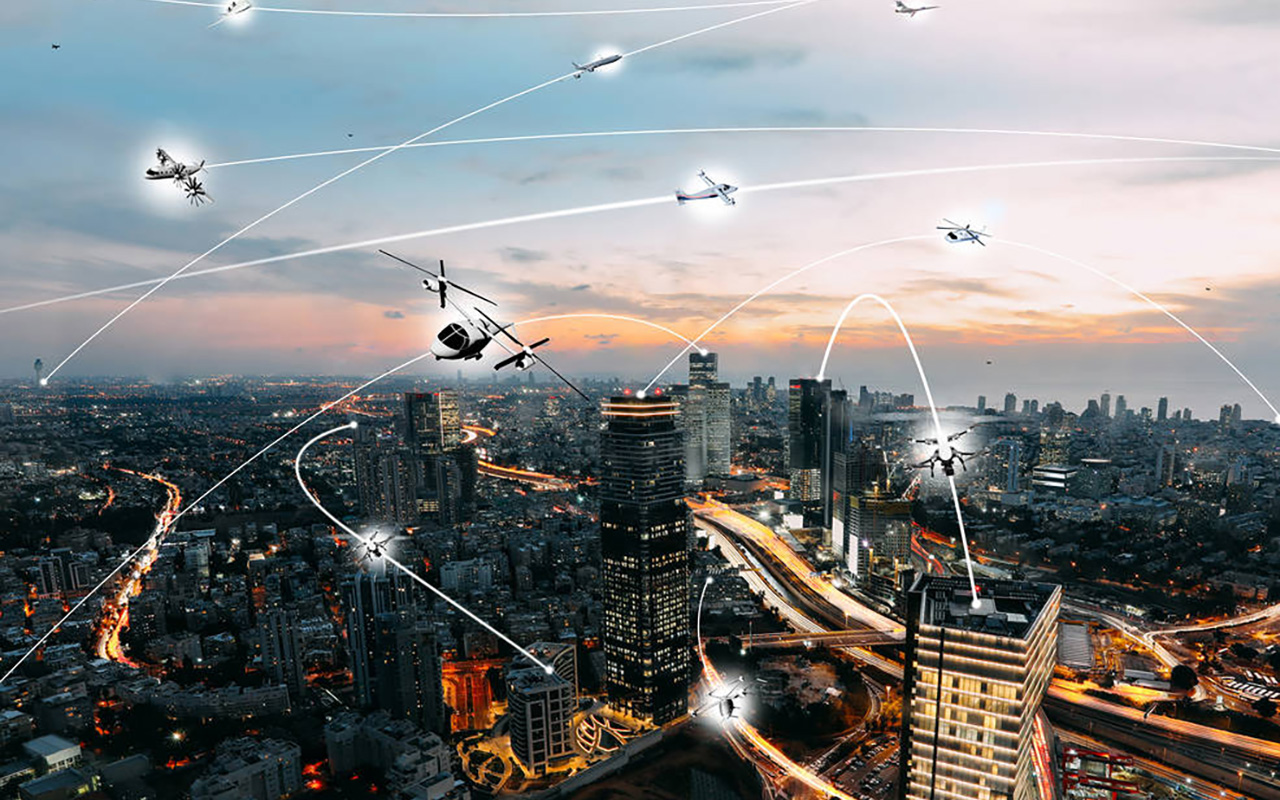Stay Up to Date
Submit your email address to receive the latest industry and Aerospace America news.
Comparisons to self-driving cars are of little help
Picture a busy parking lot with 20 self-driving cars scattered around, all moving in random directions with no lines or rules of the road. Would you want to visit that shopping mall?
Of course not, says Amy Pritchett, a professor and the head of the Department of Aerospace Engineering at Penn State and a former director of NASA’s Aviation Safety Program.
She describes such a scenario to help explain some of the issues confronting the advanced air mobility industry as it grapples with how to plan for hundreds, or thousands, of electric, highly automated aircraft. Pritchett and other experts agree that remotely piloted aircraft that rely heavily on automation could turn out to be safer than self-driving cars, but the industry still faces many hurdles to achieve widespread adoption of such flight.
“We could add technology and sensors that would give those cars ‘see and avoid’ capabilities, but that would still be chaos,” Pritchett tells me in a phone interview. “So we lay out a structure, like the white or yellow lines on a parking lot, and rules. And that’s what we’ll need for air taxis also, whether they have pilots on board or not.”
Such rules in the air would include delimited routes and altitudes for air taxes, especially near airports, and common understanding for how to respond to crises, she says.
She understands why air taxi startups see remotely piloted craft as the ultimate goal, but she thinks that goal is a long way off, perhaps more than the 10-year timeline sometimes mentioned by California-based Wisk Aero, which intends to skip any plans for conventionally piloted air taxis and seek certification of aircraft that would not have a pilot on board.
“From the industry’s perspective, it’s an economic equation. Having a pilot on board means one less paying passenger,” she says. “But I personally look at the fact that these demonstration flights many companies are making have all been in controlled airspace with few other airplanes around. It needs to be proven that it can fly with a variety of other airplanes around, and safe enough that you would be okay with it flying over your house.”
Automated flight technology has been helping to guide airplanes for decades and, therefore, is actually ahead of the curve for driverless cars, Pritchett says.
“I’ve heard people in the auto industry say things like, ‘Oh, you guys are still catching up on autonomy,’” she says with a laugh. “The truth is, we’ve had degrees of autonomy in commercial transport aircraft for more than 20 years, but we are more careful and more regulated in aviation, and we’ve determined there must be a pilot on board to intervene when something goes wrong.”
Roughly 90% of the events that occur on a typical passenger flight are now automated, but 90% of flights also include pilot intervention to override the technology, Pritchett says.
And most of the autonomy in jetliners occurs at high altitudes where there is almost nothing to collide with, she says.
“At low altitudes, where an air taxi would fly, we’re talking about birds, trees, kites, that kind of thing, and we have no system in place to test the technology and then prove to the FAA that the technology can handle it,” she says.
Even at low altitudes, she acknowledges that automated aircraft may be safer than autopiloted cars, simply because of the complexities involved in navigating complex environments like a four-way stop.
But Pritchett says researchers in aviation autonomy don’t care to emulate the auto industry.
“The regulations and practices we have for self-driving cars are like the Wild West. They have almost no regulation compared to aviation,” she says.
To get some perspective on research into self-driving cars, I followed up Pritchett’s conversation by talking to Qing Tian, an assistant professor of computer science at Bowling Green State University in Ohio who has a $149,000 grant from the National Science Foundation to study ways to reduce the time it takes self-driving vehicles to detect objects.
“In the air, there’s no pedestrians, no intersections and few other vehicles, so I would say it is easier to design for that environment,” Tian says. “An aircraft in flight may have a lot more lead time to react to something like another aircraft approaching, although airport environments during takeoff and landing are more complex.”
He says the basic technology underlying “see and avoid” capabilities in cars and aircraft would include a deep neural network — artificial intelligence that attempts to mimic human thinking.
One major difference, he says, would be a greater need for communication.
“In a car, we don’t need to communicate much with other people, but aircraft do communicate with air traffic controllers and other aircraft,” he says.
Get the latest news about advanced air mobility delivered to your inbox every two weeks.
About paul brinkmann
Paul covers advanced air mobility, space launches and more for our website and the quarterly magazine. Paul joined us in 2022 and is based near Kennedy Space Center in Florida. He previously covered aerospace for United Press International and the Orlando Sentinel.
Related Posts
Stay Up to Date
Submit your email address to receive the latest industry and Aerospace America news.




